JBL L42ms review: wireless speaker delivers retro charm and super sound
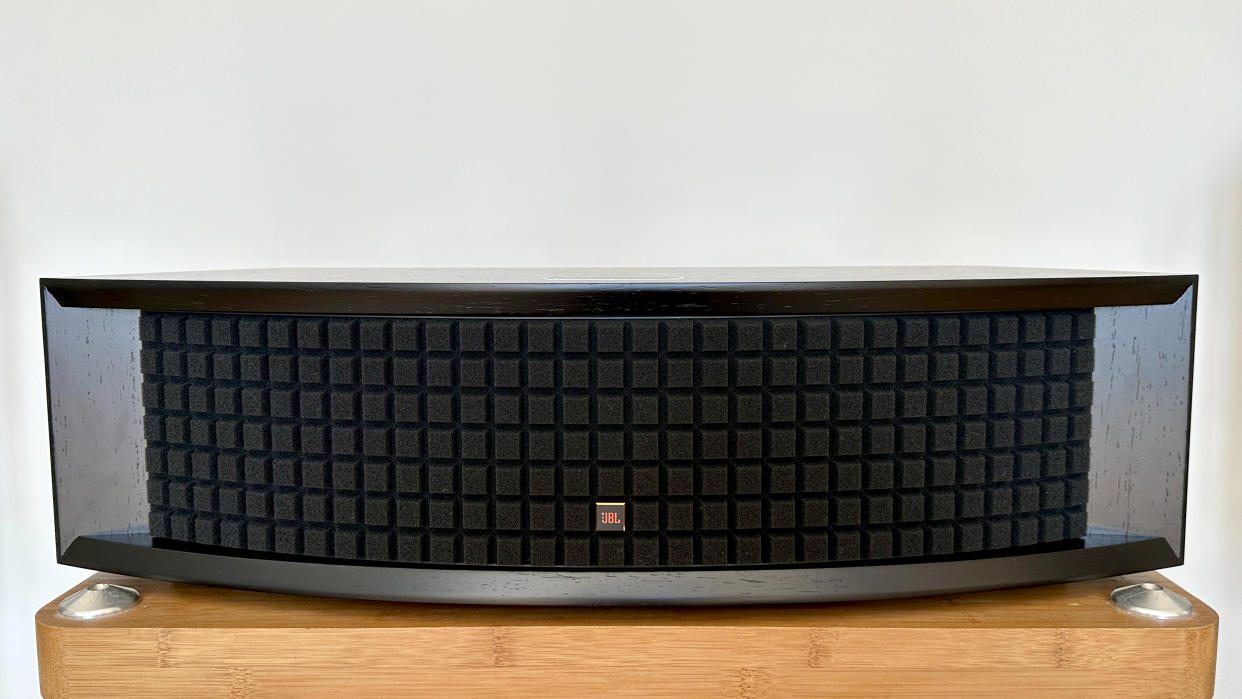
Those who know JBL know the company has more illustrious history than most on which to draw - and so if anyone is entitled to deliver an all-in-one wireless audio system with more than a hint of 1970s prog-rock-n-double-denim about it, JBL is.
The L42ms is a tragically un-retro model name, it’s true - but visually, at least, JBL wants you to set your watch back 50 years and more. And I have to say, I’m all here for it. So is this one of the best wireless speakers money can buy right now?
JBL L42ms: Price & Availability
The JBL L42ms is on sale now, and in the United Kingdom it’s priced at £999. In JBL’s native North America, it goes for $1099. In Australia it will set you back AU$2499.
That money buys you a big cabinet and a lot of stuff inside it, but the all-in-one market is on the up-and-up just now - so the L42ms will have to compete, and compete hard, with the likes of the Ruark R410, the KEF LSX II (although strictly speaking that’s an all-in-two system) and the Naim Mu-so 2 if it’s going to make a meaningful impression.
JBL L42ms review: Features & What's New?
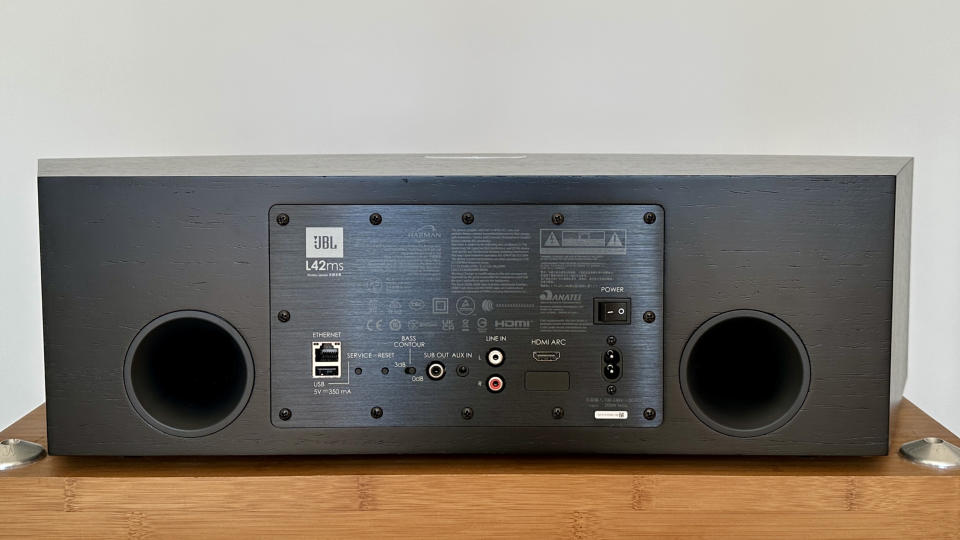
At the front of the L42ms, behind that magnetically attached ‘Quadrex’ grille, there are a couple of 100mm mid/bass drivers and a pair of 20mm aluminium-dome tweeters. They’re angled out in an effort to create as large a soundfield and expansive a sweet spot as possible - and they’re driven by a total of 200 watts of Class D amplification. Each tweeter gets 25 watts, and there’s 75 watts for each mid/bass driver.
Getting audio information into the L42ms in the first place can be achieved in a number of ways. Naturally enough there’s dual-band Wi-Fi on board, and there’s also an Ethernet socket on the back of the cabinet if absolute network stability is what you’re after. The JBL is Roon Ready, Chromecast is built-in, Apple AirPlay 2 is available, and UPnP-capable too. In addition, it’s certified ‘Works with Smart Things’ - which means the L42ms is compatible with the numerous ‘Smart Things’ devices available via parent-company-of-the-parent-company Samsung. If that’s insufficient wireless functionality for you, there’s also Bluetooth 4.2 switch SBC and AAC codec compatibility.
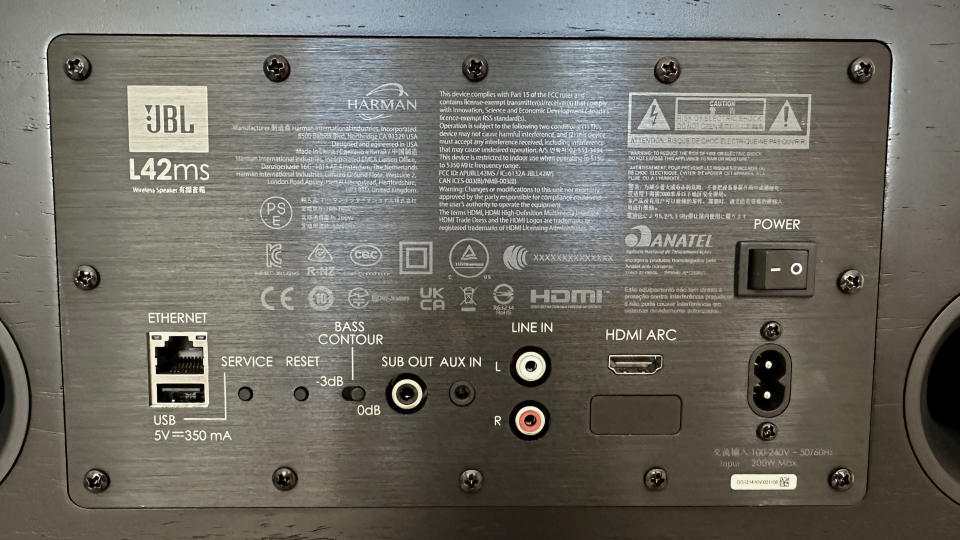
Naturally there are physical inputs too. In addition to the Ethernet socket, the rear of the L42ms features a USB-A slot, two analogue inputs (stereo RCA and 3.5mm) and an HDMI socket to allow your television to get in on the action. The rear panel also features a pre-out for a subwoofer (the JBL automatically activates an 80Hz high-pass filter should you decide to hook up a sub) and a bass contour control (-3dB and 0dB) which allows you to trim bass response relative to the position of the L42ms in your room. There are a couple of bass reflex ports around the back of the cabinet, too.
All incoming digital information is dealt with by a 24bit/96kHz DAC that can also handle DSD128. There’s support for digital audio files like MP3, FLAC, MQA and WAV (plus quite a few more) - which should be plenty to be going on with.
JBL L42ms review: Performance
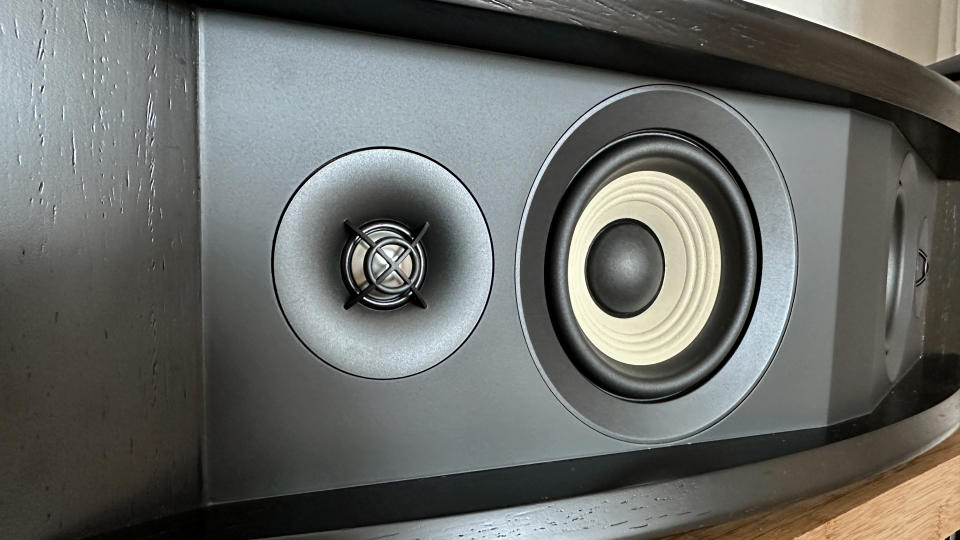
First things first: positioning the JBL L42ms is important where its audio performance is concerned. It doesn’t especially enjoy being anywhere it has a surface directly above it, for instance, so the ‘middle shelf’ isn’t ideal. And given that it’s over 16cm tall, your TV will need to be on stilts if you want to make use of that HDMI ARC socket in order to use the L42ms as a sort of soundbar.
Let’s imagine that the JBL is on a tabletop or some other position where it has open space above it, and/or you don’t mind the bottom of your TV screen being obscured. Now you’re in business - and the sound the L42ms is capable of turning out from here is very agreeable indeed.
Streaming some properly high-resolution 24bit/96kHz FLAC files from Qobuz using the thoroughly irritating Premium Audio app results in a big, well-defined and quite sprightly sound. The overall tonal balance is just fractionally on the ‘rich’ side of neutral, but not fatally so - in fact, it makes for a fairly luxurious and mildly warm presentation.
The JBL integrates its multiple drivers and the output of its bass reflex ports very nicely too - from the bottom of the frequency range to the top is a smooth and uneventful journey. Which is just how we like it.
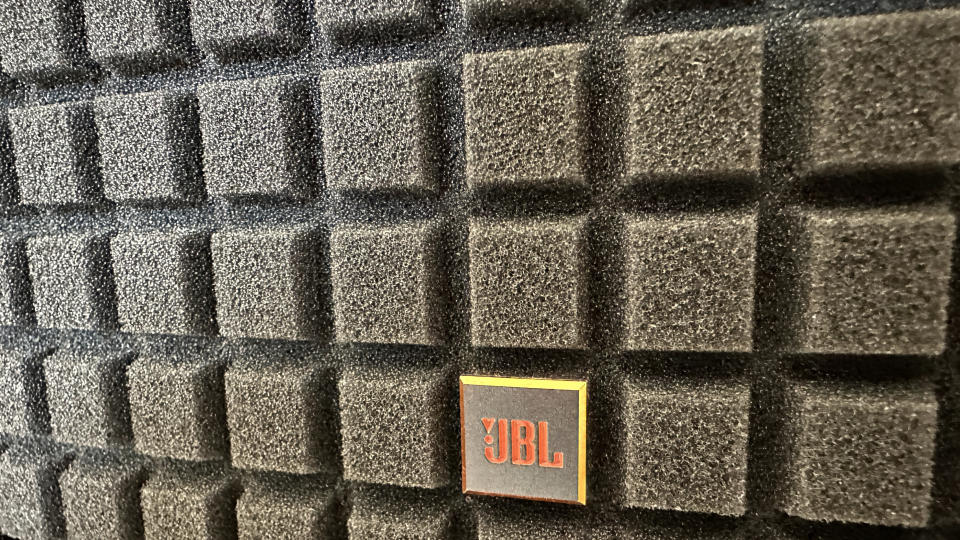
The bottom-end is textured, carries plenty of variation along with the out-and-out punch, and is controlled sufficiently well that rhythmic expression is decent too. The top of the frequency range has substance and brilliance in equal measure, is similarly well controlled, and carries just as much detail regarding tone and texture as the bass end. And in between, there’s a degree of positivity to the way the midrange is presented that makes vocalists of all types sound direct and engaged - and there’s an equally generous way with even the finest details that makes a singer sound characterful and articulate.
Without the ‘SFX’ algorithm engaged, the L42ms sounds wide and well-defined - the soundstage it can create is big and convincing, to the point where it gives a more confident impression of ‘stereo’ than the majority of single-enclosure speakers. The point-source of sound is nothing like as obvious as it is from any number of competing designs.
Switch ‘SFX’ on and the presentation gains even more width, it’s true - but it also becomes more diffuse, less rigorous and ultimately less convincing. Even when listening to sound via the HDMI ARC input (which is when you might consider the effect to be at its most useful), its relative lack of focus makes it the less enjoyable option.
Dynamic headroom is considerable, and the JBL is capable of playing at pretty oppressive volume levels without sounding stressed and without shifting its basic sonic attitude. And it has enough subtlety to its presentation to make the dynamic variations in a solo instrument fairly apparent too.
JBL L42ms review: Design & Usability
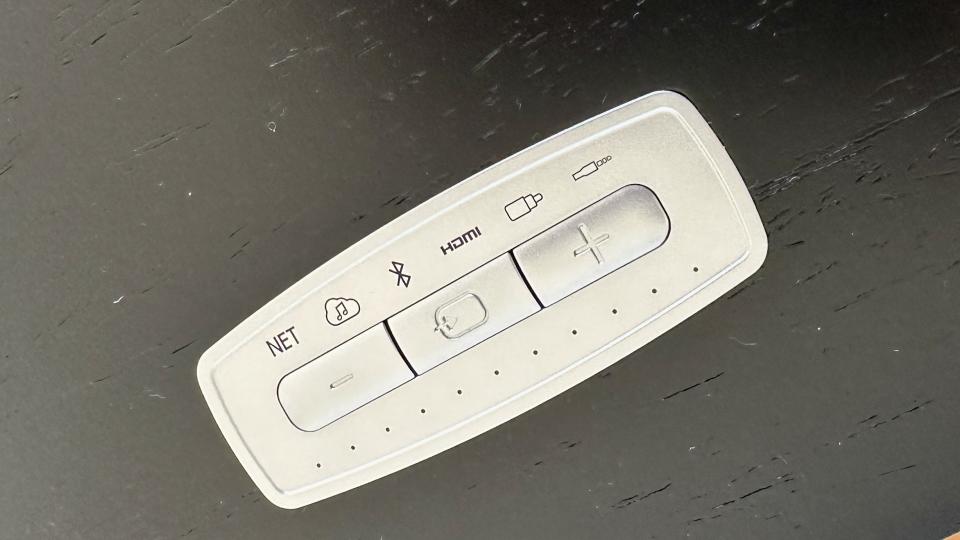
The JBL archive is extensive, and you don’t have to delve all that deep to find that curved cabinets and ‘Quadrex’ foam grille covers have long been ‘a thing’. And in the L42ms, they ride again.
The L42ms is a substantial 162 x 617 x 234mm (HxWxD) and 8.5kg, but it wears it well - in either the natural walnut or black walnut finishes, it looks purposeful but not bulky. The standard of build and finish is well up to the sort of standard the asking price demands, and those real wood veneers feel as good as they look.
As far as usability is concerned, the JBL is something of a mixed bag. There are a few physical controls on top of the cabinet (volume up/down and input selection) which are positive in their action and reliable in their response.
There’s a little remote control included in the packaging, too, which is nothing special to look at and even less special in the way it feels - but it covers power on/off, volume up/down/mute, play/pause, skip forwards/backwards, input selection and SFX (sound field expansion) without any difficulties.
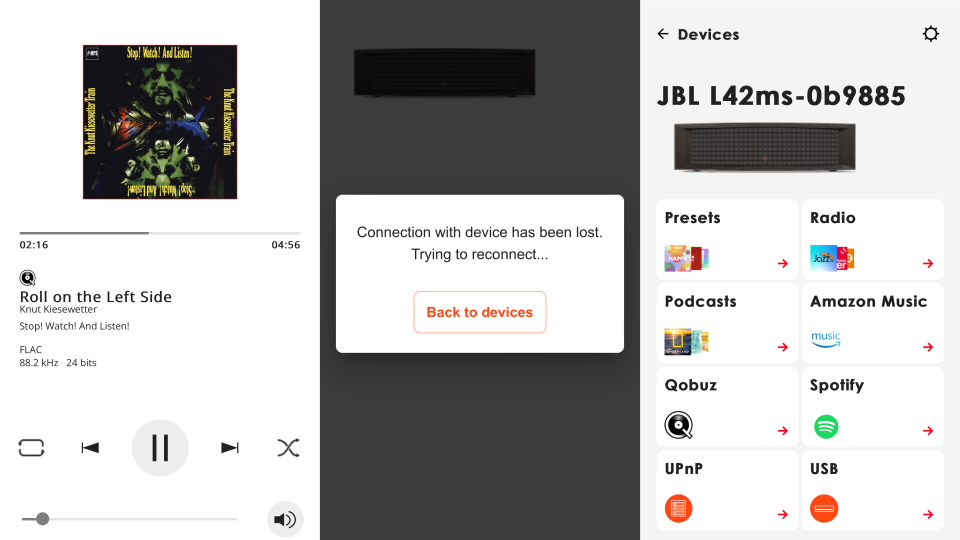
The JBL Premium Audio app (free for iOS and Android), though, is an altogether less qualified success. It’s not intended to be a full-function affair, but rather to be used to get the L42ms onto your network and then offer access to the likes of Amazon Music, Qobuz and Spotify, along with internet radio and the set-up of some presets.
The trouble is, it’s slow, dimwitted, cannot spell and struggles to stay connected to the device even if it’s on the same shelf. If you set a playlist playing and then let the device that has the app loaded go to sleep, when you wake it the app takes an eternity to catch up with what’s actually happening - if it catches up at all.
JBL may have aced the ‘retro aesthetic’ thing with the L42ms, but the last thing anyone wants is an app that behaves like it’s 2006.
JBL L42ms review: Verdict
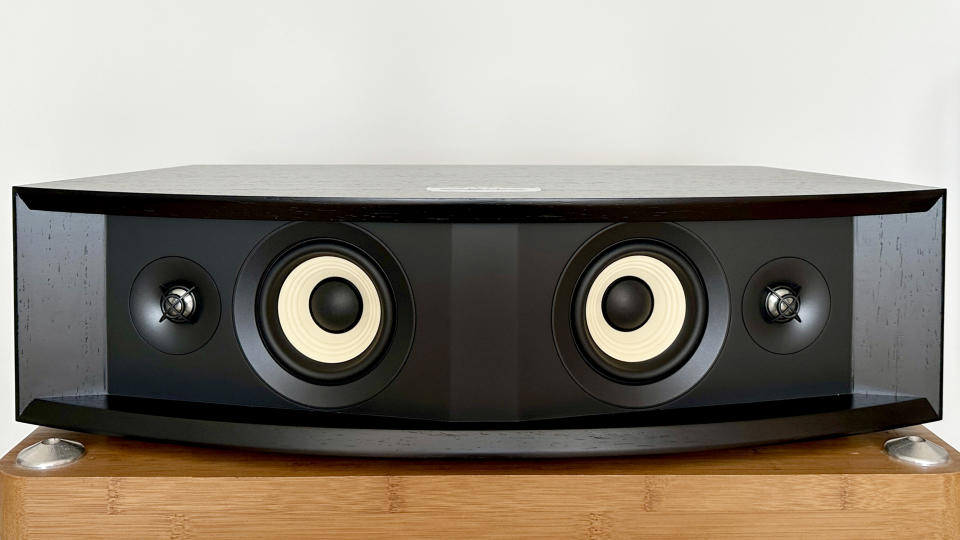
The JBL L42ms is a very specific product, both in the way it sounds and the way it looks. It’s got plenty going for it in both respects, though, and if you can overlook the remedial nature of its control app then it’s a very likeable device and a valid contender for a place on your all-in-one audio system shortlist.
It won’t suit everyone, mind, but those with the space, the desire for a big and classically hefty JBL sound, plus some 70s-tastic looks, will find the JBL L42ms suits them just perfectly.
Also consider
In terms of form and well as function, the Ruark R410 is a direct (although admittedly more expensive) competitor to the L42ms - and it has credentials as furniture that are just as strong, too. Or you could go down the ‘all-in-two’ route and give the KEF LSX II a listen - as a system it has an awful lot going for it, but it’s not especially ‘decorative’ in the way the JBL and Ruark are. Or there's JBL's own range, Authentics, which are less qualified but then less pricey overall too, so worth a consideration.

